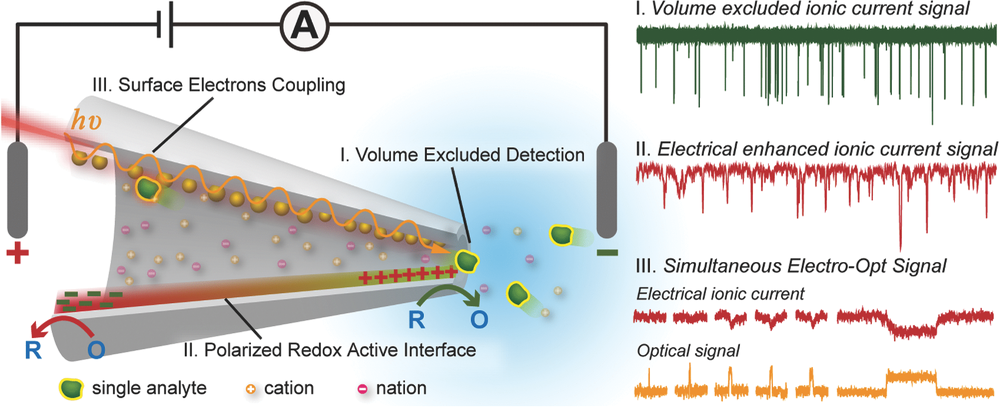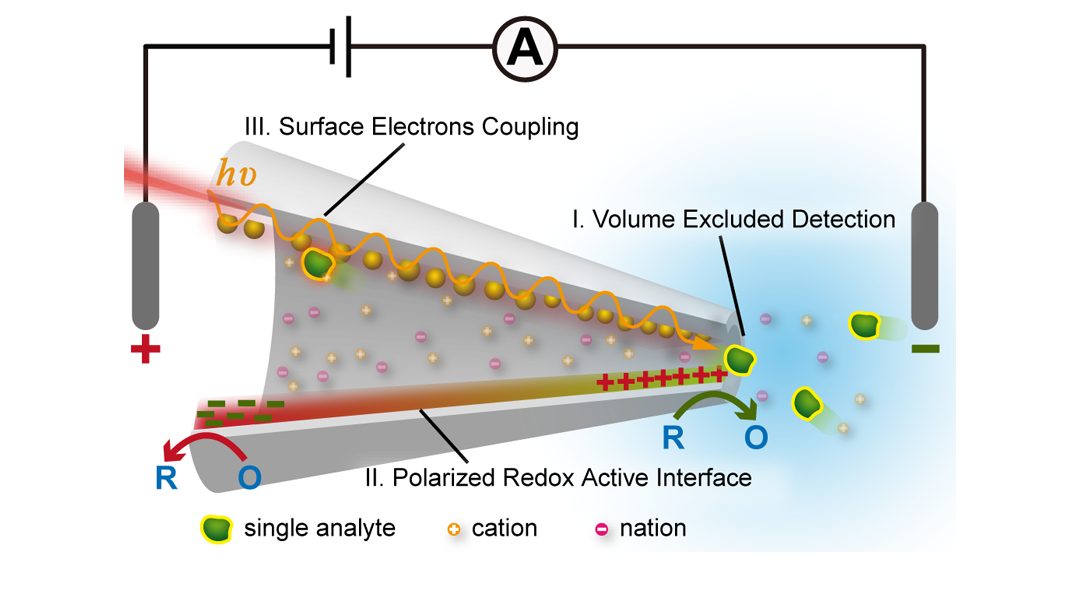Witnessing the infinitesimal ripples in space itself, gravitational waves are the great breakthrough of the year. The captivated observation sounded the clarion of communication between the world and the frigid universe. This kind of infinitesimal ripple not only exists in massive system but also links up the tiny components in single molecule level even near atomic scale. Therefore, scientists also desired the developed techniques could deliver multiple insights into the extreme microcosmic world, which could help explain decades of chemical and biochemical issues as the next breakthrough in science.
Nowadays, nanopore has been developed as an elegant and reagent-free detection method for sensing the dynamic structure, conformations and other characteristics of single molecules from electrochemistry and optics. As a potential gene sequencer, conventional mechanism of nanopore sensing is related to the volume exclusion effect. In recent years, it seems that major challenges in nanopore-based DNA sequencing has been fully addressed as the portable sequencer has been released by Oxford Nanopore. So, what is the next breakthrough for nanopore techniques? Will the ability of nanopore techniques excite research community again?

Recently, in a Small Methods concept paper by Prof. Yi-Tao Long’s research team from East China University of Science and Technology discusses and describes a future of nanopore techniques. Although there are many banner techniques could obtain single molecule information like cryo-EM, dynamic observation of the interaction, working process still are challengeable. “with the increasing demands on revealing the single-molecule chemistry and biophysics, it requires nanopores not only provide the structural/conformational/sequencing information of single analytes, but also achieve the new mission which is directly reading the dynamic structure-activity of each individuals.” Prof. Yi-Tao Long said.
They proposed and extended the concept of electrochemically confined effects in nanopores for developing new sensing mechanisms and methods. Confined space creates a unique physical and chemical environment for specific and accurate microcosmic process. For example, an enzyme constructs a confinement to fit upon its substrate binding, which leads to the successive chemical pathway for the reaction. The confined ion channel accommodates the movements of ions between the inside and outside of the cell, modulating the uneven distribution of ions across the cell membrane. “As for nanopore, the tiny pore-form structure not only provides a physical confined space for volume excluded detection of each single analytes,” Long says, “but also could induce some special exciting phenomena in electrochemistry and optics.” They discussed the electrochemically confinements of strong interactions between pore and analytes, the electron transfer process in the aperture, and even the subwavelength light inside nanopores. The new sensing mechanism of nanopore may lead the next key contribution of nanopores in nanoscience.
These researchers believe these electrochemical confined effects are capable of exploring the novel detection mechanisms of nanopore to efficiently convert the dynamic function/structure of single molecules into the ionic signatures or optical patterns. This will prompt the nanopore to emerge on the comprehensive range of future applications in both life and material science.
Kindly contributed by the Authors.

















